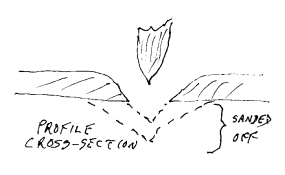i once had a friend use an rb67 as a pinhole camera by fitting a front body cap with a pinhole lens.
i have my cap drilled n ready to accept a brass shim disc.
i just have no idea what drill size to use for the hole. then once i do drill it... how do i know what f-stop to gage my exposures?
:confused:
i have my cap drilled n ready to accept a brass shim disc.
i just have no idea what drill size to use for the hole. then once i do drill it... how do i know what f-stop to gage my exposures?
:confused:





 .
.
 ). If the plate has significant thickness -- say approaching the pinhole diameter or thicker, it's no longer a pinhole, but a tunnel! The latter produces vignetting and rapid fall-off of exposure, depending on the thickness.
). If the plate has significant thickness -- say approaching the pinhole diameter or thicker, it's no longer a pinhole, but a tunnel! The latter produces vignetting and rapid fall-off of exposure, depending on the thickness.

 )
)
